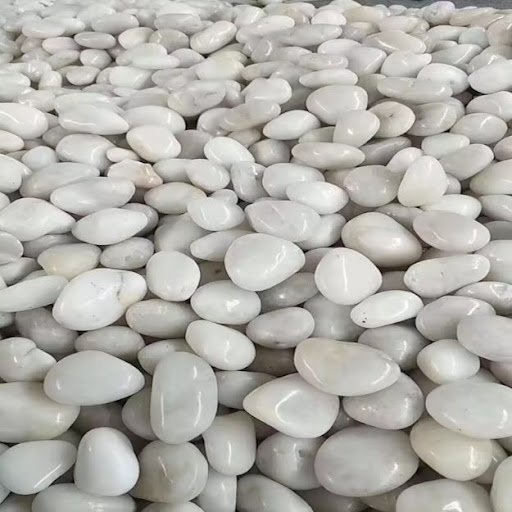Sustainable landscaping is gaining the status of one of the priorities of homeowners, businesses, and communities when minimizing the environmental impact without compromising the beauty of outdoor spaces. White landscaping rock in bulk is one of the materials that combines appearance and sustainability. Besides this beautiful, timeless, and clean appearance, it also promotes environmentally friendly practices in a number of ways.
Sustainability Benefits of Landscaping Rock
As opposed to organic mulch, which has to be renewed seasonally, the white landscaping rock can be used for years before losing its charm. This is because of this long life span as well; this reduces wastage and transportation emissions in terms of needing to be replaced regularly.
Moreover, landscaping with rocks may lead to the preservation of water. Planting white landscaping rock in large quantities as a ground cover will prevent excess evaporation of soil, resulting in cooler roots of plants and minimized irrigation required.
Another advantage is that of erosion control. White rock offers a steady ground, which does not allow soil to be washed away when there is high rainfall.
Choosing Eco-Friendly Sources
Landscaping rock does not all come in the same way. In case sustainability is a goal, one should decide to pick a local supplier to reduce transportation-related emissions.
Most quarries, stone yards will provide you with white rock which has been mined or processed locally, therefore minimizing the carbon footprint at the time you buy it.
There are even suppliers who sell recycled or reused stone products, which gives the material a fresh start rather than depositing them in landfills. Questioning the method of sourcing material can help make sure your bulk white landscaping rocks match your environmental principles.
Installation Techniques for Maximum Longevity
Green landscaping is not merely material-dependent, but dependent on the way it is installed. With proper planning, your white rock can last longer, and it should require minimal maintenance. To make the area stable and enhance drainage, use a stable foundation made of tarred sand or tarred gravel.
A top-quality weed barrier fabric under the rock will go a long way to eliminating chemical herbicides in the future. This prevents pollutants into the earth and water bodies around.
An efficient arrangement at the start is also prudent to expect. Putting plants that have similar water requirements together and covering them in white rock minimizes the loss of water and gives an aesthetic appearance to the areas.
White Rock and Climate-Friendly Designs
White rock does absorb heat by reacting with sunlight and reduces surface temperatures in the area close to your home or building. This is able to help in cooler microclimates, particularly in cities where urban heating is trapped by concrete and asphalt.
Combining bulk white landscaping rock with drought-resistant plants and/or xeriscaping design, or native plants, also increases eco-friendly advantages. Such plants use less water and fertilizers, and that helps in creating a healthier and more sustainable outdoor situation.
Conclusion
The decision to use landscaping white rock in bulk is more than a design reasoning; it is an environmentally friendly one. This is because of its sustainability, ability to conserve water, and minimal maintenance required; hence making it an excellent choice for landscaping projects. Choosing where it is located, what it is made of, and how it is made durable can mean an outdoor setup that is lovely, practical, and saves the planet in the years to come.

